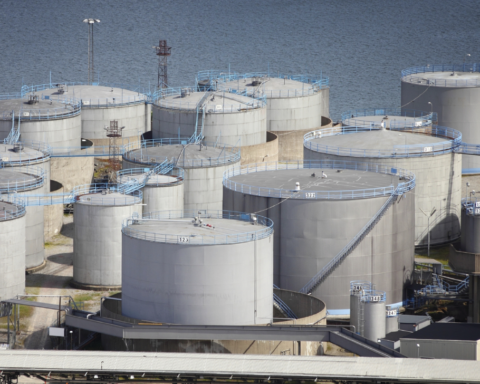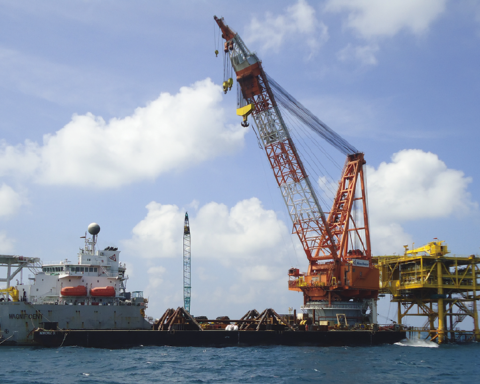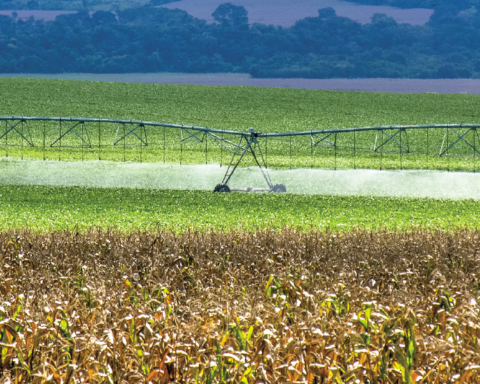Valery Iktisanov – Head of the Hydrodynamic Research Laboratory, TatNIPIneft Institute, Doctor of Technical Sciences, Professor,
e-mail: iktissanov@tatnipi.ru
Fedor Shkrudnev – Authorized Representative of the President of the Russian Federation in Leningrad Region in 1993-1999, Chairman of the Presidium of the Russian Scientific and Technical Society,
e-mail: rnto369@gmail.com
Abstract. An increasing number of researchers have submitted papers in which they write that cumulative oil production exceeds the amount of recoverable reserves at old oilfields. New contradictions arise when attempts are made to explain possible mechanisms for the ingress of oil into fields. This article is devoted to the attempts made to settle the main contradictions of oilfield geology and oilfield development based on the latest physics discoveries and the results of an experiment to increase the ingress of oil into an oilfield.
Keywords: hydrocarbons, reserves replacement, total synthesis, primal matter, space wrinkles, experimental research.
Introduction
Despite mankind’s significant dependence on hydrocarbons and the massive amount of experimental material gathered across almost two centuries of petroleum development, no concept has yet emerged that would be capable of unifying unresolved oil problems. The main unresolved issues include:
– various concepts of hydrocarbon generation (biogenic – A. D. Arkhangelsky, V. I. Vernadsky, N. B. Vassoevich, E. M. Galimov, M. I. Gubkin, A. F. Dobryansky, A. E. Kontorovich, S. G. Neruchev, Al. A. Petrov, A. B. Ronov, V. A. Sokolov, N. M. Strakhov, A. A. Trofimuk, V. A. Uspensky, J. Moldovan, K. Peters, S. Silverman, B. Tissot, A. Treibs, D. Welte, J. Hunt, J. Espitalie and others; abiogenic – G. N. Dolenko, P. N. Kropotkin, N. A. Kudryavtsev, V. B. Porfiryev, V. D. Sokolov, E. B. Chekalyuk, E. Cost, F. Hoyle, R. Robinson, T. Gold and others; mixed – V. P. Gavrilov, A. N. Dmitrievsky, A. A. Barenbaum and others),
– replacement of oil reserves in depleted fields (R. Kh. Muslimov, V. P. Gavrilov, N. P. Zapivalov, S. N. Zakirov, V. A. Trofimov, V. G. Izotov, V. I. Korchagin, A. I. Timurziev, K. B. Ashirov, A. A. Barenbaum, I. N. Plotnikova et al. [1–9]),
– age of hydrocarbons, presence of short-lived isotopes in oil, etc. (V. P. Gavrilov, J. M. Peter., P. Peltonen, S. D. Scott. I., A. A. Barenbaum et al.),
The general tendency is that the authors usually consider only one side of the observed natural processes, completely ignoring the studies of other authors. It would be appropriate to quote the words of the famous scientist – encyclopedist N. A. Morozov, «The greatest tragedy of science is the destruction of a magnificent theory with one small, vile fact.» Unfortunately, these small – and not so small – facts are often ignored by scientists, which leads to many conflicting hypotheses and theories. For example, the hypothesis of the biogenic origin of oil that once prevailed. Currently, the inorganic hypothesis gets the upper hand. But researchers in both camps have discovered and described real facts.
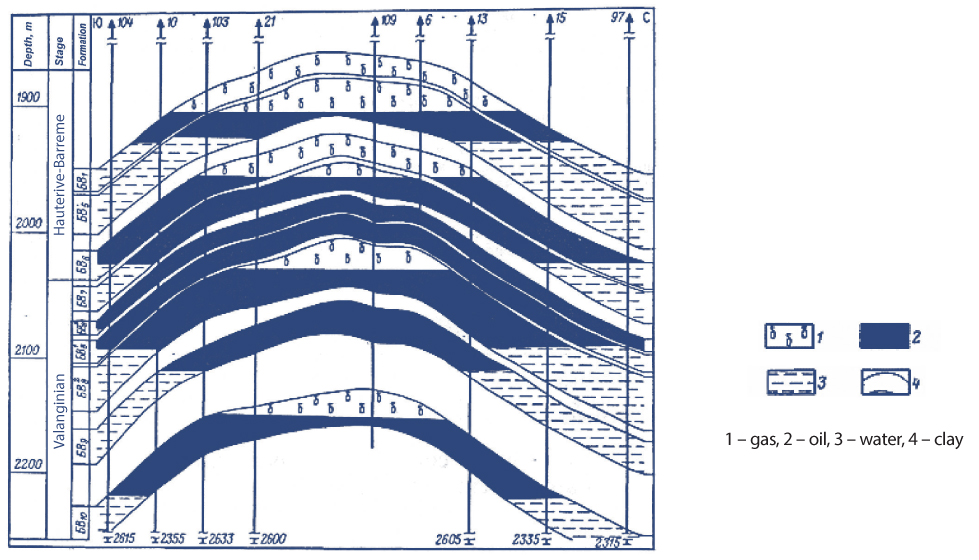
Source: http://www.geolib.ru/OilGasGeo/1989/09/Stat/stat06.html
Moreover, for each subsequent hypothesis, it is necessary to accept new assumptions, which in turn require the addition of new ones. As an example, at first the hypothesis of the biogenic origin of oil appeared, based on the fact that oil is produced from the organic matter of dead organisms in sedimentary rocks. This hypothesis is supported by the proximity of the C13 / C12 isotope ratio in oil and in living organisms, as well as by the presence of biomolecules or their fragments in oil, for example, porphyrins, analogues of which are present in hemoglobin and chlorophyll.
It was further discovered that traces and reserves of hydrocarbons are found in magmatic rock, and that hydrocarbons are commonplace throughout the universe. All of this led to the creation of the abiogenic hypothesis, which completely contradicts its biogenic counterpart. To explain the abiogenic hypothesis, assumptions were introduced indicating that oil comes through oil-supply channels from the crystalline basement or source rocks. But it remains unclear as to why only certain layers are saturated with oil through oil-supply channels, while the water-saturated layers located between the oil-saturated ones remain without oil. Or how do oil-supply channels spread to deposits or formations, saturating them with various oil compositions and bypassing the covers of other development formations (Figure 1)? Of course, oil-supply channels do exist. The simplest evidence of this is mud volcanoes, which spew hydrocarbons that are not trapped. But the introduction of the concept of «oil-supply channel» fails to explain the aforementioned contradictions.
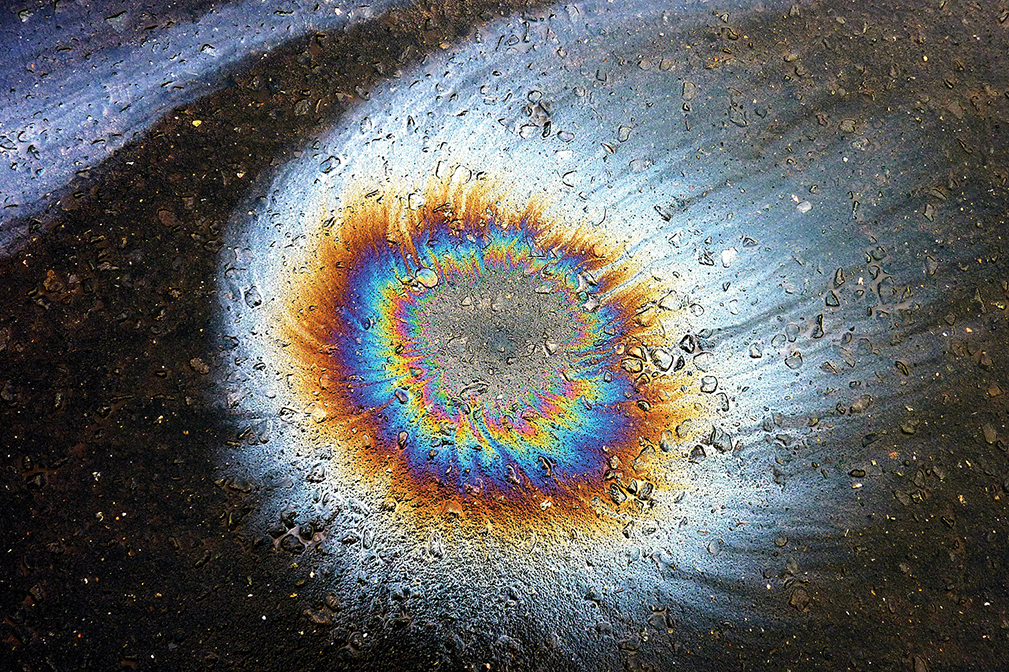
In particular, for the Romashkinskoye field, when the oil of its foundation arrived, the Vorobyov deposits with good reservoir properties and a strong cover in the form of Mullinsky clays had to be saturated with oil at first.
But for some reason, the Kyn-Pash deposits located above the Vorobyov deposits, but below the Domanik deposits and potentially considered as source rocks, are oil-saturated.
Therefore, other assumptions are further introduced, for example, that oil saturation occurred in different-age geology, when there were different reservoir pressures. Of course, one could agree with this reasoning, but then why are reserves still replaced in our day (Figure 2), and why are water-saturated formations still not saturated with oil? In addition, is it worth considering various geological ages if studies by American scientists using the radiocarbon method for the C14 isotope have shown that the age of oils from different wells in the California Gulf deposits is only 4–6 thousand years [11]? Moreover, this age is comparable with the time of hydrocarbon destruction. Further, it is not clear how oil reserves are replaced in the fields, for which reservoir pressure differs little from the initial one. Another question is, if oil comes from the depths of the Earth, then where did it originate? Or if we were to assume that it was produced as a result of the degassing of deep hydrogen and various chemical reactions, then how did hydrogen form in the depths of the Earth and how did our planet form in general?
Of course, the above line of reasoning is simplified, as it did not consider numerous studies of trace elements in oils, extensive research on biomarkers, studies on the isotopic composition of carbon and hydrogen of oils and gases, etc. In general, this does not change the general trend, when each study or observation can be explained separately, but it is impossible to bring them together.
Proposed concept of hydrocarbon origin and reserve replacement
The observed trend is a sign of a crisis in the oil sciences and, above all, in oilfield geology and in the development of oil fields. Various attempts are being made to overcome this crisis, for example, combining various hypotheses of oil origin, but in principle this does not solve the problem, as there are still some unresolved issues. Note that a similar trend is being observed in other sciences – in physics, astrophysics, biology, medicine.
Overcoming this crisis is only possible with the help of radical changes in our views on the fundamental processes of geology and the universe as a whole [12]. One precondition for that is the discovery by physicists of so-called «dark matter» – matter that cannot be perceived by our senses or sensors. Moreover, according to calculations, this matter is at an order of magnitude larger than the physically-dense matter to which we have become accustomed. In which case, it turns out that all of our ideas about the world order are based on a maximum of only 10% of al matter, which is clearly not enough to form even an approximate idea. Note that our senses have developed primarily for adaptation to our living conditions, and not for a knowledge of nature. Electronic devices have only allowed us to expand the range of perception of our senses, but not to go beyond them. Due to the limited capacities of our senses, we will inevitably have a limited understanding of matter. Therefore, the Leninist definition of matter as an objective reality, given to us in sensations, is currently the limitation of the development of science.

1 – Romashkinskoe field, 2 – Samotlorskoe field, 3 – Tuimazinskoe field (R.K. Muslimov, 2004),
4 – Shebelinskoe field (A.A. Barenbaum, 2004)
It is possible to solve the problem of hydrocarbon-generation and reserve replacement by expanding the concept of matter and presenting it in the form of primary matters, which under certain conditions (changes in space dimensionality) merge into hybrid matters, and as a special case, into physically-dense matter existing in solid, liquid, gaseous and plasma states [12]. The second important aspect is the heterogeneity (curvature) of space, i. e. changes in its properties and performance in various directions, for which there is much evidence. The third aspect is the interaction of matter and space. In other words, the matter that fills space affects the properties and performance of the space that it fills, and the space affects the matter. The adoption of these three aspects makes it possible, as Stephen Hawkins put it, to create a «unified theory of everything,» including explaining the origin of our planet, various minerals, hydrocarbons, as well as reserve replacement as deposits are depleted.
According to this concept, the reason for the formation of planets is the emergence of a global space-deformation zone, where conditions are created for the synthesis of various hybrid matters, including physically-dense matter made from the building blocks of the universe – primary matter.
Upon completion of the formation of planetary spheres in the area of the heterogeneity of space, the level of space dimensionality returns to its original level. Due to the fact that the planet partially loses its material in the form of a gas plume when the planet is moving, along with the decay of radioactive elements, a slight additional synthesis of physically-dense matter occurs and the balance of dimensionality is restored. As a result, such a system can stably exist for quite a long time, as is evidenced by the work of V. I. Vernadsky, noting that the geochemical system of our planet was previously and is currently in a state of stable dynamic equilibrium.
Inside the global zone of heterogeneity, there are local zones of heterogeneity, which are penetrated by a different spectrum of primary matters. Depending on the specific spectrum of matter, various chemical elements and substances are formed.
Similar claims can be made against various methods of stimulating the bottom hole area, hydraulic fracturing, construction of wells with a complex configuration of the wellbore(s), new methods of well completion, well-pattern packing, bottom-hole pressure lowering to the optimum, etc. In all of these cases, the effect is considered to be a change in the well-flow rate, including those from zero, but for some reason, the influence of interference (interaction) of the wells is always ignored, which leads to the fact that the total increase in the area is always less than the increase in the well. The influence of interference can be significant for a dense grid of wells, as a result of which the effect of measures to intensify oil production can be reduced to 0.3–0.4. As a result, a significant part of various methods of oil-production enhancement has a much smaller effect than is initially calculated or measured in the well. In this regard, the makeup of deposits is again a quick fix to maintain the level of oil production.
As a result, the role of various methods of increasing oil-recovery factor and enhancing oil production in long-developed fields is apparently overstated. Most of the incrementally-produced oil is determined by natural factors, and not by human stimulation of the formation or bottom-hole area. At the same time, the introduction of enhanced oil-recovery techniques, treatment of bottom-hole areas, hydraulic fracturing, drilling of the sealing well pattern, use of new methods of well completions, etc., are provoking a greater synthesis of oil and these methods must certainly be applied.
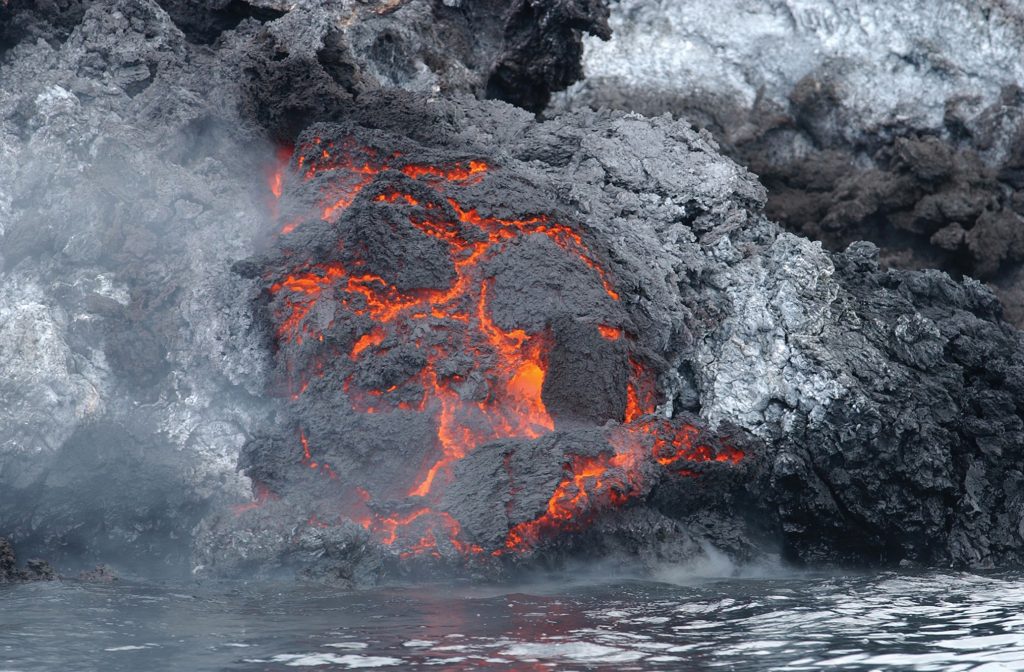
Experiment to increase the ingress of oil into deposits
A theory is true if it is proved in practice. In this regard, a unique experiment was conducted at one small Russian field to increase the rate of oil ingress (synthesis). For this, flow rates, water cuts, bottom hole and reservoir pressures were analysed before and after impact. The impact itself was an increase in the gradient of dimensionality within the bedding of formations. The results of the experiment were unexpected – there was no increase in oil-production rates for wells, bottom-hole and reservoir pressures did not change. In addition, nearby fields were examined, but there were no significant changes therein. Instead, it was discovered that the newly-drilled wells produced oil with a two- or three-fold increase in initial production rates compared to similar initial production rates of the wells drilled earlier [13]. This is evidenced by the apparent stepwise increase in daily production in the area, starting from the second half of 2015.
This fact indirectly shows that the impact on the reservoir was successful. The explanation for the obtained results is probably as follows. First: an increase in reserves does not mean an automatic increase in production if the field has not reached the last stages of development. Further, from the practice of developing various fields, it is known that side-tracking at 50–100 m from the main hole is almost always successful, which actually has no satisfactory explanation, even when using the initial pressure gradient above which the flow begins. In this case, according to reservoir-simulation models, there is a «shortage» of oil production. Therefore, the reason for the reserve replacement in both cases, i. e. under artificial impact and under the influence of natural factors, is that oil synthesis mainly occurs in areas of the field that are characterized by low pressure gradients, i. e. far from the wells, or at their shutdowns.
Note that the concept of a dimensionality gradient is much broader than a pressure gradient, and that a change in dimensionality leads to a change in pressure. The opposite effect may also be observed when the maximum pressure gradients near the well affect the dimensionality gradients responsible for oil synthesis. In general, this issue requires further study and research. The main requirements for the studied fields shall be as follows: a high degree of exploration and depletion of reserves, availability of product accounting tools, openness and reliability of data, tracking dynamics for several years, lack of dissolved gas drive, planned side-tracking and well pattern packing, the ability to monitor pressure-monitoring wells. The impact can be carried out over a large area, including the oil-and-gas province.
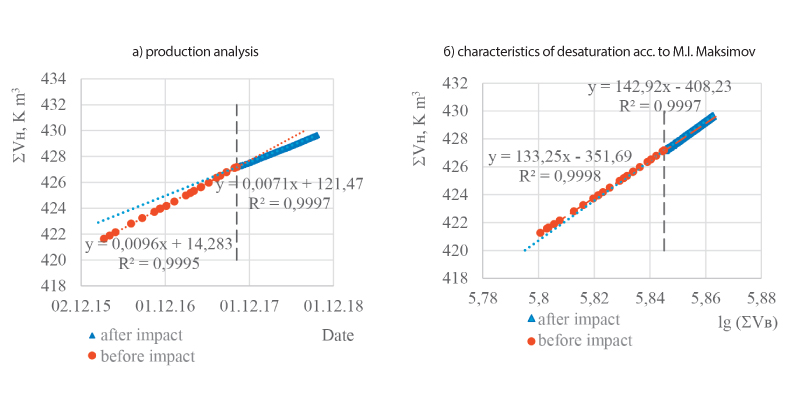
Main conclusions
The proposed concept makes it possible to summarize a wide variety of observations and studies in the field of oilfield geology and oilfield development, and thereby to resolve the existing crisis in oil sciences. The practical side of reserve replacement may be multifaceted. This is not only a redistribution of benchmarks for the development of mature and green fields, changes in GE costs, tax benefits for «old» deposits, but also the possibility of an artificial increase (and even decrease) in the rate of reserve replacement, which can fundamentally change the situation in terms of the country’s reserves and production. The topic of future research shall be the study of the specific spectra of matter responsible for the synthesis of a particular substance, including hydrocarbons, which will allow in the future to influence the synthesis process and to yield all necessary substances and elements.
To a first approximation, hydrocarbon synthesis also belongs to this process. The difference is that the materials that were previously involved in the vital processes of organisms are used as primary materials. That is why oils are characterized by a large variety of composition and have a similar isotopic composition of carbon with living organisms. Moreover, this process can occur in different parts of the Earth’s crust and at different depths, so hydrocarbon traces and reserves are found almost everywhere – in typical reservoirs, shales, and igneous rocks [6]. In the presence of oil-supply channels, hydrocarbons can migrate into the trap, or erupt to the surface in the form of mud volcanoes or «black smokers.» For isolated traps, for example, those «floating» in salt deposits, the field could indeed be the birth- and storage-place of hydrocarbons. These processes are described in more detail in [13].
This hypothesis is fundamentally different from existing concepts of the origin of hydrocarbons and additionally makes it possible to explain all of our existing experimental observations as to the geology and development of oil fields, including the replacement of reserves. This process is as follows – as reserves are recovered at the field, the initial dimension is violated, which again provokes the synthesis of the same elements and substances from the same spectrum of primary materials. Upon completion of the synthesis, the balance of dimensionality is restored. Moreover, this process does not occur instantly, but with some delay. The created mathematical model for describing this process showed that the delay for various deposits varies in the range of 60–230 years [14]. In general, the simulation yielded the following conclusions:
– production enhancement provokes a greater flow of oil,
– as reserves are exhausted, the rate of synthesis is virtually comparable with the level of production, and this trend can exist for hundreds and thousands of years.
– the effect of injecting mineralized water does not always lead to positive results, as it can reduce the rate of oil synthesis, and, therefore, there is an optimum solution to this problem.
The findings, intersecting with those of other authors, point to the need for a radical revision of the prospects for developing «old» fields, as well as the basic provisions for development with regard to oil synthesis in deposits (changing the equations of material balance, developing hydrodynamic simulators with replacement of reserves, methods for calculating oil-recovery factor, optimal rates of selection and impact on the reservoir, audit of reserves, etc.). In addition, we note that «depletion of the resource base of fuel and raw-material industries as fields in operation are depleted,» as specified in paragraph 12, sub. 13 of the «Strategy for Economic Security of the Russian Federation» will never happen, and therefore that there is no need to actively develop new fields in underdeveloped regions of the country with undeveloped infrastructure, for example, on the shelf plate of the Arctic.

The overestimated role of enhanced oil-recovery techniques and enhanced oil recovery
With the recognition of field make-up, a completely-different view appears regarding enhanced oil-recovery techniques (EOR) and well stimulation. For example, the official estimated share of oil produced by means of EOR in PJSC TATNEFT amounted to 25% of the total production at the end of 2014. At the Datsin field, it is believed that due to tertiary methods in 2018, about 32% of the total production was produced. But if one considers the real fact of the natural make-up of fields, then most of the incremental produced oil is determined by natural factors, and not by human stimulation of formation. However, it will certainly benefit oil companies to show that oil production at old fields is supported by their efforts and high professionalism.
The obtained conclusion is supported by the detected overestimation of incremental oil production using the characteristics of desaturation (CD), namely, this method has been widely used at oil companies. As a side note, in Russia, there is still no approved standard for assessing the effectiveness of EOR, which allows us to freely interpret incremental production. This issue is considered in more detail in the article [15]. In short, we note that the main sign for using specific characteristics of desaturation for extrapolation during the forecast period represents the straightforward nature of the selected dependence. However, as it turned out, even strict compliance with this requirement does not guarantee the accuracy of the assessment. In particular, when assessing the effectiveness of measures to increase oil recovery, it has often happened that, after formation impact, the growth rate of cumulative production decreases, and integrated characteristics of desaturation show an increase in production (Figure 3). This was observed for the characteristics of desaturation of M. I. Maksimov, B. F. Sazonov, A. M. Pirverdyan, G. S. Kambarov et al. [16]. The production increment was shown in the increase in cumulative oil production after the impact compared with the trend before the impact. Moreover, correlation factors for the trend line were very close to one, and the reservoir pressure at the considered development sites was kept constant.
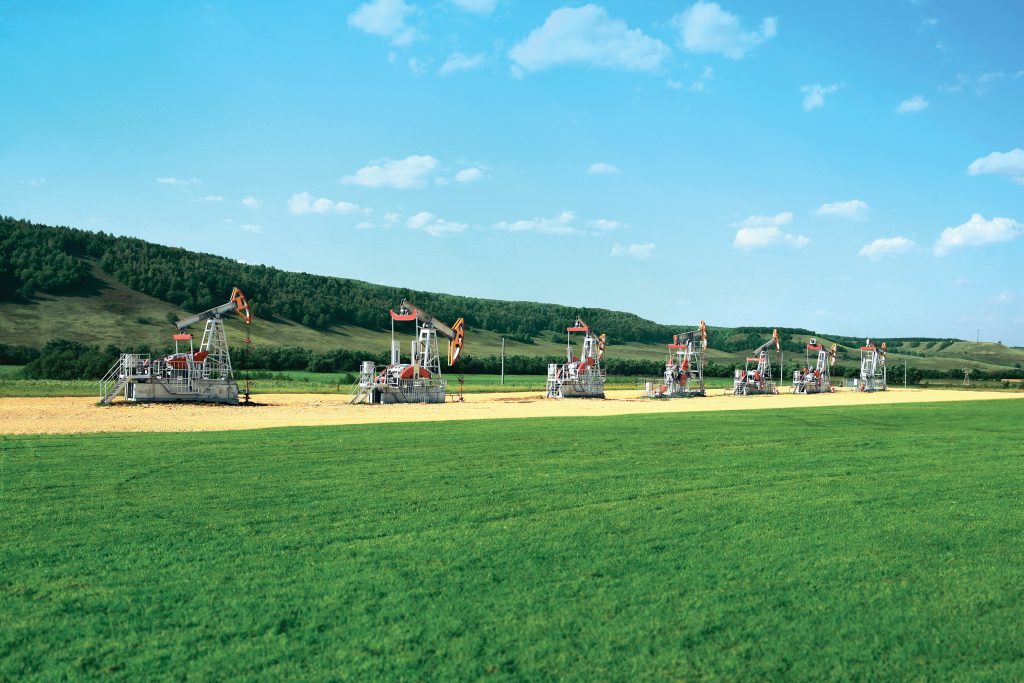
- Muslimov, R. Kh. Development of the super-giant Romashkinskoe field is an outstanding contribution of Russian scientists and specialists to the world oil science and practice of developing oil fields // Georesources – 2008. – No. 4 (27). – p. 2–5.
- Zakirov S.N., Indrupsky I. M., Zakirov E. S. et al.// New principles and technologies for the development of oil-and-gas fields: Part 2, M; Izhevsk: Institute of Computer Research, 2009, 484 p.
- Gavrilov, V. P. Oil-and-gas resources are renewable http://www.gubkin.ru/faculty/geology_and_geophysics/chairs_and_departments/geology/Neft%20gas%20vozobnovlyaemy.pdf
- Muslimov R. Kh., Glumov N. F., Plotnikova I. N., Trofimov V. A., Nurgaliev D. K. Oil-and-gas fields – self-developing and constantly-renewable resources // Geology of oil and gas. Special release 2004. pp. 43–49.
- Barenbaum, A. A. Scientific revolution of the problem of oil-and-gas origins. New oil-and-gas paradigm // Georesources. 2014. № 4(59). pp. 9–15.
- Zapivalov N.P., Popov I. P. Fluidodynamic models of oil-and-gas deposits. Novorossiysk, SB RAS Publishing House, 2003, p.197
- Smirnova M. N. Grozny school of oil geologists, supporters of the deep origin of oil. In the book. “Degassing of the Earth and the Genesis of Hydrocarbon Fluids and Fields,” M. Geos, 2002, p. 36–367.
- Timurziev A. I. Analysis of interstitial systems of the sedimentary cover and foundation of the White Tiger deposit (Vietnam). Exposure of oil gas. 2010. No. 5(11). pp.11–20.
- Trofimov V.A., Korolev E. A., Khuzin I. A. What are oil supply channels? // Materials of the All-Russian Conference with international participation «Degassing of the Earth: Geotectonics, Geodynamics, Geofluids, Oil-and-Gas, Hydrocarbons, and Life.» – M.: GEOS, 2010 pp. 577–579.
Bazarevskaya V. G. The Unique Romashkinskoe Field of Tatarstan – inexhaustible source of oil reserves addition// Georesources. – 2006. – No.2(19). – pp. 9–11. - Peter J.M., Peltonen P., Scott S. D. et al. Ages of hydrothermal petroleum and carbonate in the Guaymas Basin, Gulf of California: Implications for oil generation, expulsion, and migration // Geology. 1991. V.19. – P. 253–256
- Iktisanov V.A., Kondrakov I. M., Shkrudnev F. D. Interesting Things about New Knowledge. Russian Scientific and Technical Society, 2016–102 pp.http://rnto.club/biblioteka/iktisanov-kondrakov-shkrudnev/Stati/zanimatelno-o-novih-znan%D1%96jah.html
- Iktisanov V.A., Shkrudnev F. D. Mysterious dark oily liquid.. M.: VNIIOENG OJSC, 2019, 104 p.
- Iktisanov, V. A. Oil-synthesis rate during field development // Oilfield Business, 2017 – No. 4. – pp. 49–54.
- Iktisanov, V.A., Sakhabutdinov R. Z. Evaluation of the technological efficiency of oil-production enhancement and oil-recovery increase methods by analyzing production history // Oil Industry, 2019 – No. 5. – pp. 72–76.
- RD153–39.0–110–01 Guidelines. Geological analysis of the development of oil- and oil-and-gas fields. – M.: FGU «Expertneftegas,» 2002–59 pp.




